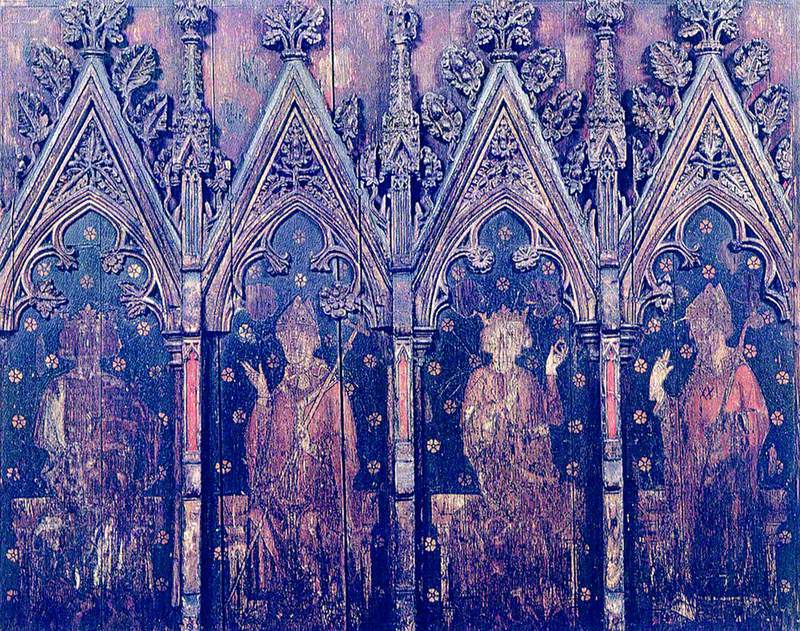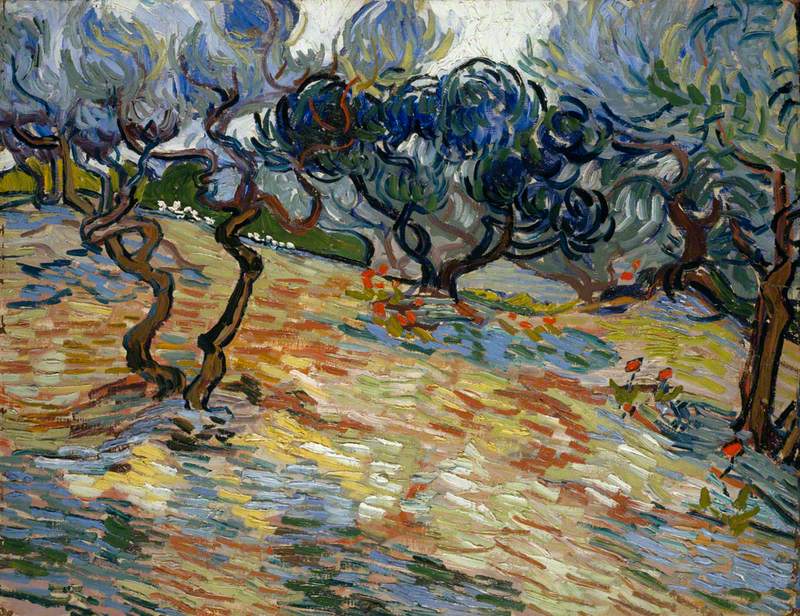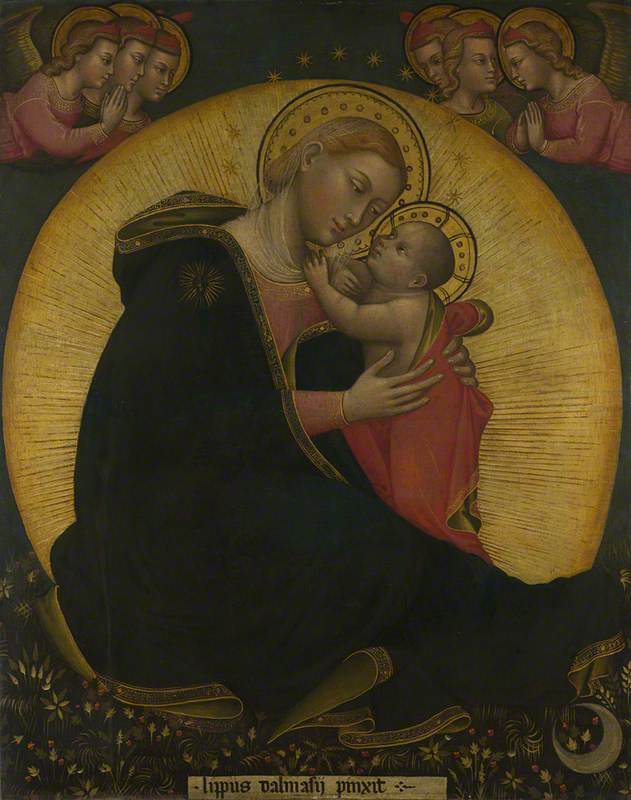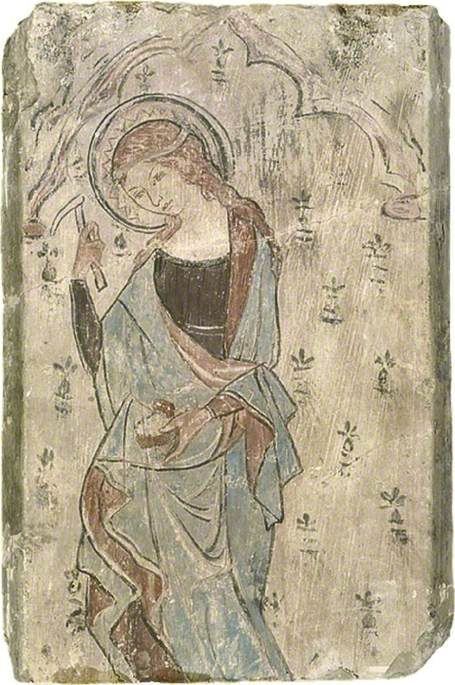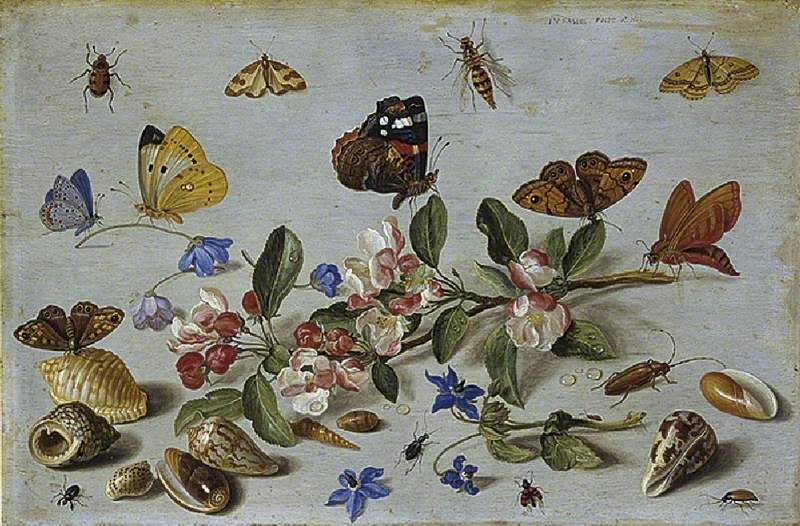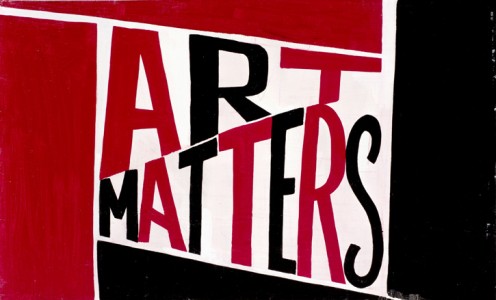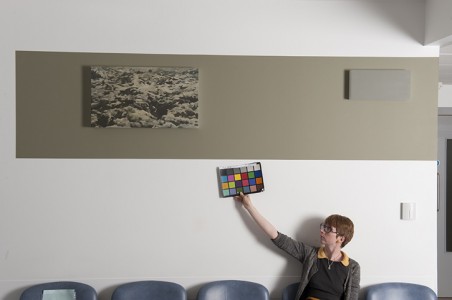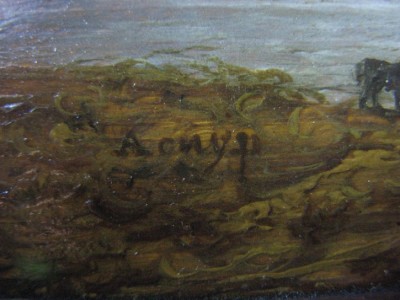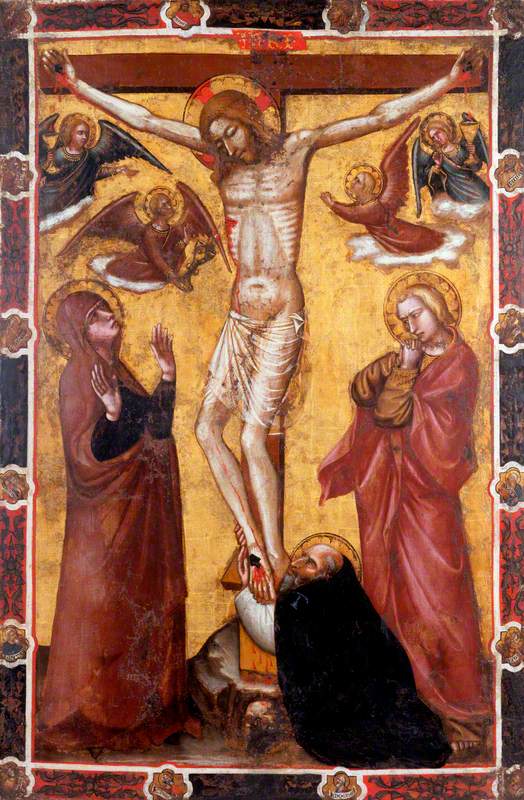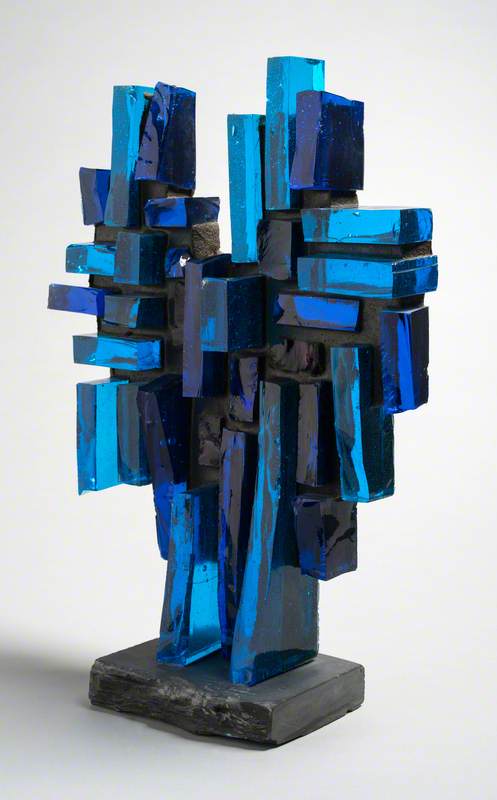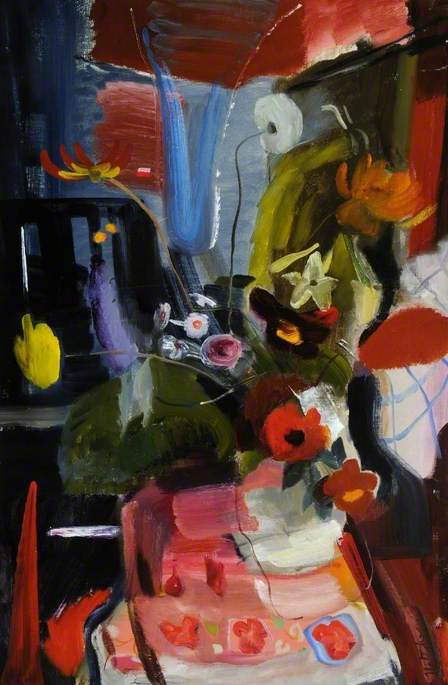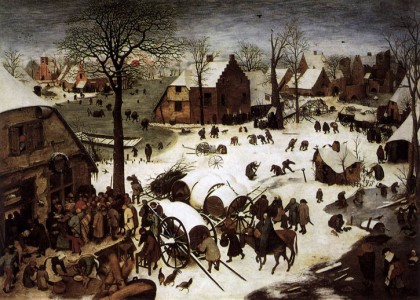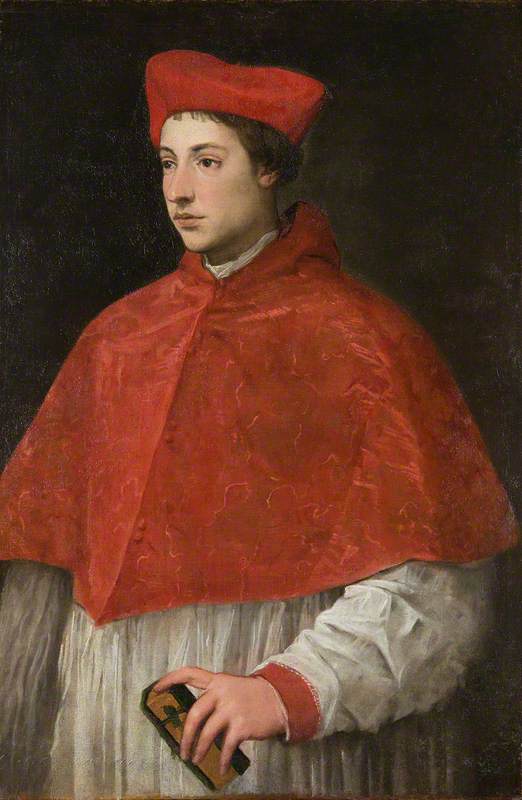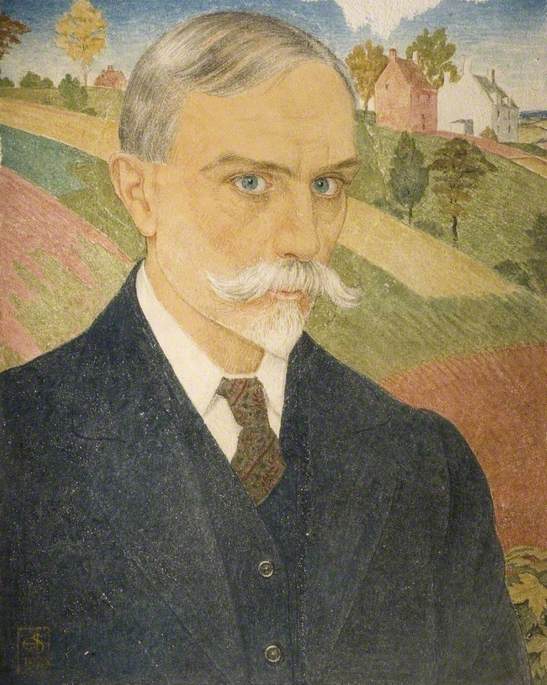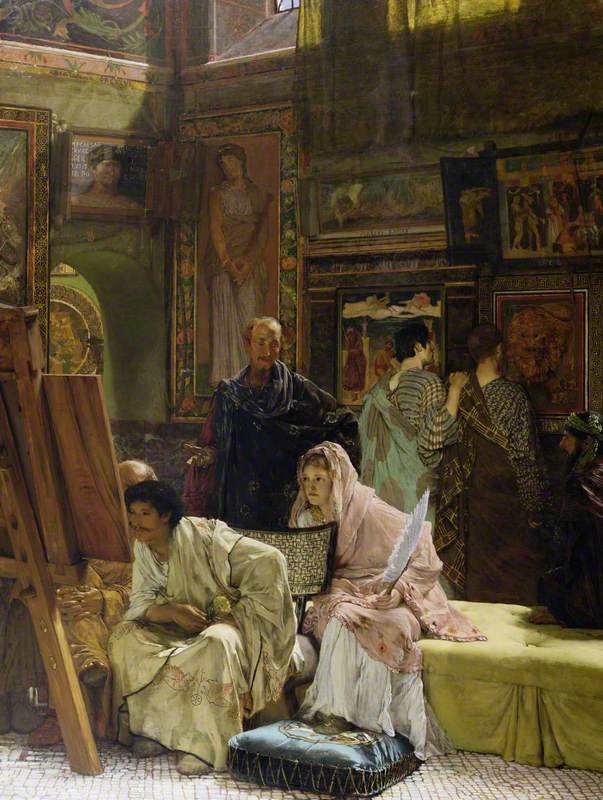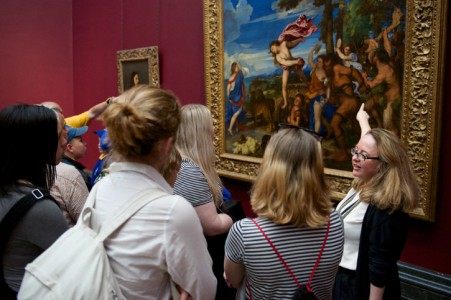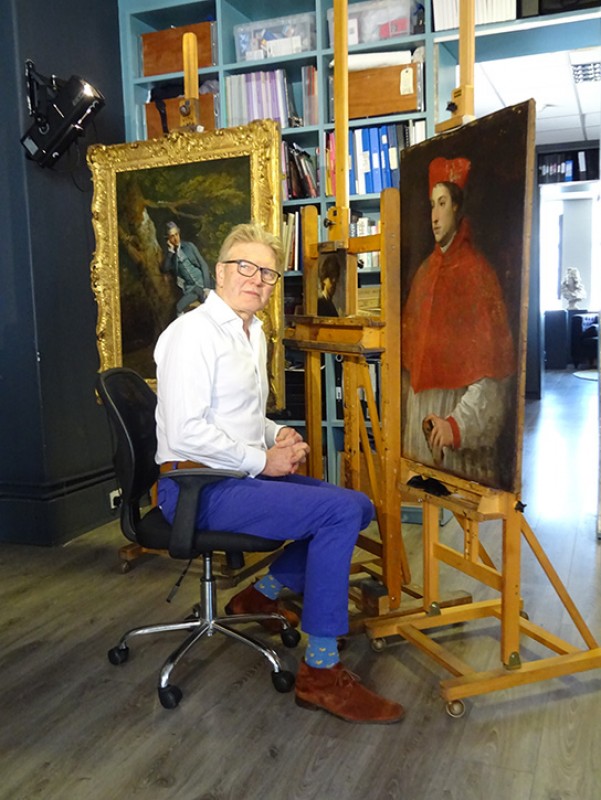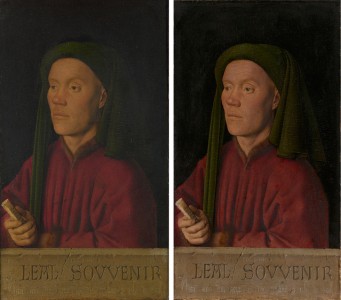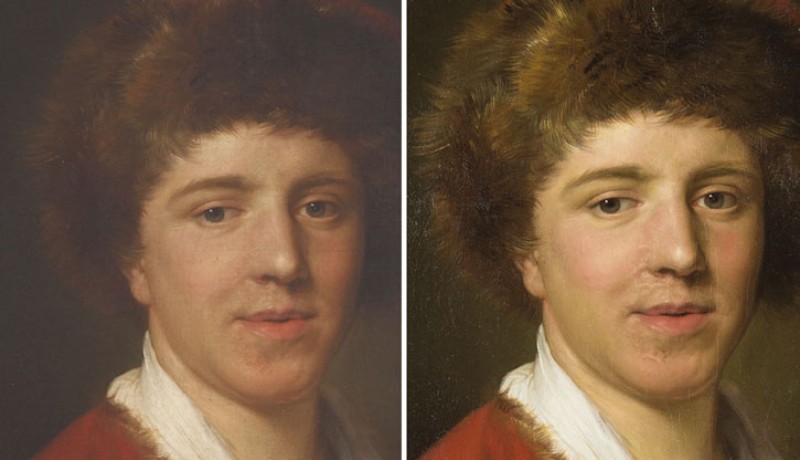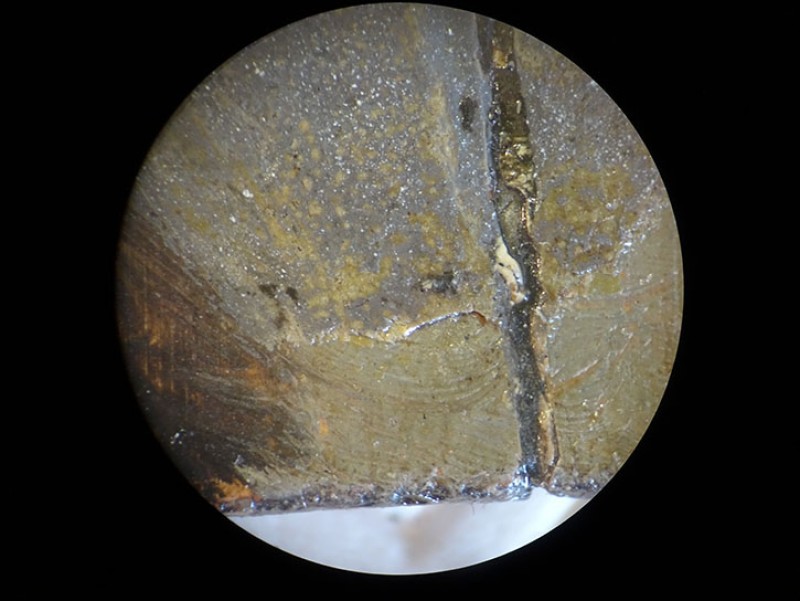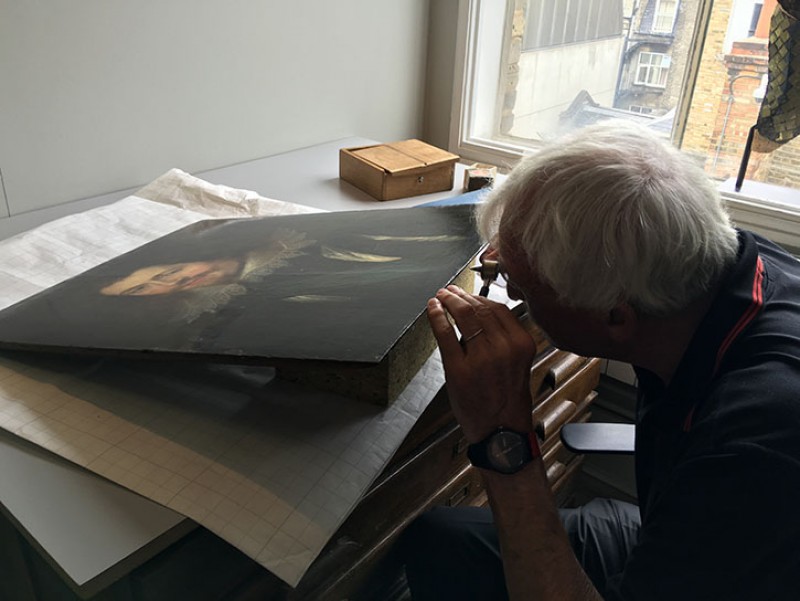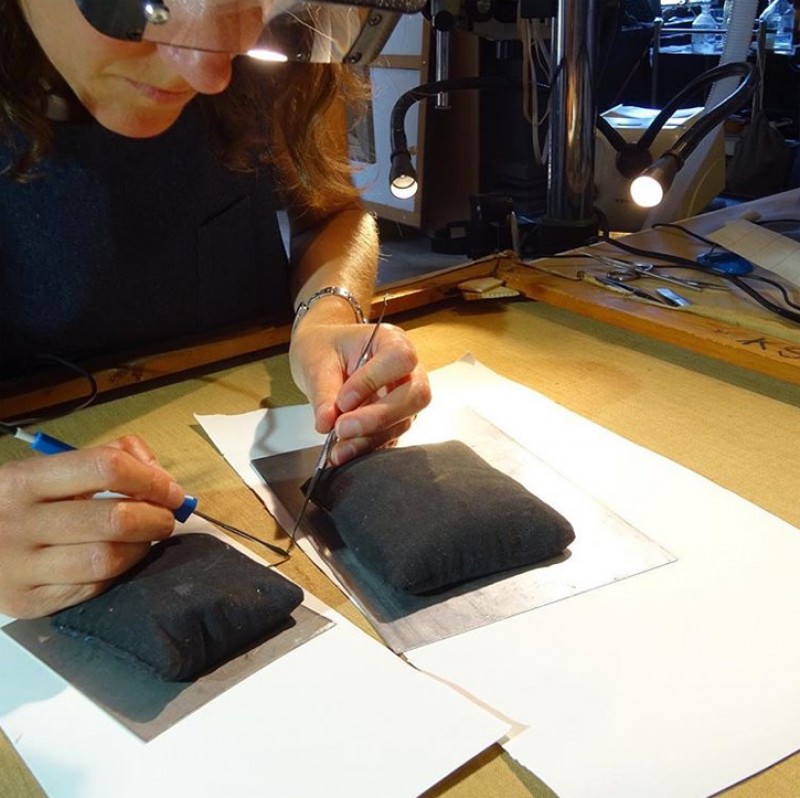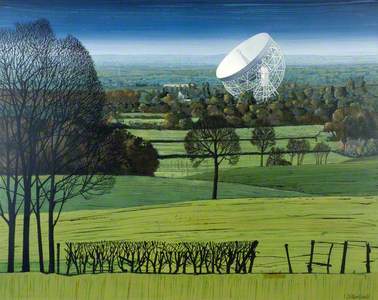Before the addition of prints, drawings and watercolours in 2016, and sculpture in February 2019, Art UK included works exclusively painted in oils, tempera and acrylic.
Why was this? These are more permanent materials than drawings and watercolours, and so have traditionally been used for more important works, have been more highly valued, and are stored and displayed differently in museums. Paintings in oil and related materials were just the starting point for Art UK’s long-term survey of the country’s art collections, but let's take a closer look at what constitutes a painting.
The commonest materials on Art UK are:
Oil
Oil paint, in which the coloured pigments are suspended in oil, was first used in Northern Europe for panel paintings in the thirteenth century and much later in Italy, where its use parallels the increased use of canvas. Oil paint dries slowly, can be mixed on the canvas, diluted to transparency or given texture. This flexibility has made it a favourite medium for artists for centuries. Originally artists made their own; ready-mixed paints in sealable containers only became available commercially in the 1840s.
Acrylic
Acrylic paints were first commercially available in the 1950s. They are coloured pigments in a suspension of polymers (plastics such as acrylics, vinyl, etc.) in water. These are dilutable with water when wet but are water-resistant, like oil paints, when dry. They also dry much faster than oil paints so are very convenient to use.
Canvas
Canvas is the most common support for paintings, light and durable. Woven from hemp or linen, it was used in Northern Europe from the fourteenth century alongside wooden panels.
Canvas was originally most commonly used for processional banners such as The Madonna of Humility and was perhaps first used for oil painting in Venice in the late fifteenth century.
Head of a Man
(fragment of 'Christ and the Adulteress') c.1508–1510
Titian (c.1488–1576) 
Traditionally it is primed, or undercoated, with a neutral or warm colour, to provide a smooth and non-absorbent surface for painting. In the twentieth
Tempera (egg and glue tempera)
The term tempera now generally means pigment mixed with egg yolk. This dries quickly and, as the egg yolk sets, to a waterproof finish.
Virgin and Child Enthroned with Eight Saints
(triptych, centre panel) 14th C
Nardo di Cione (c.1320–1365/1366) (attributed to) 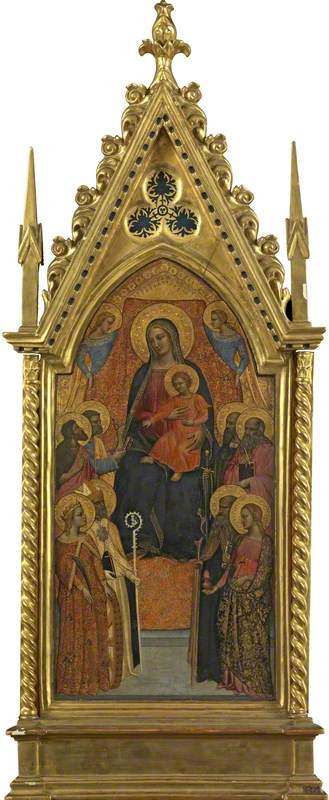
In
There was a significant revival in the use of tempera in British painting in the first half of the twentieth century.
Distemper (sometimes called glue-tempera), in contrast, is pigment bound just with vegetable or animal glue, and although very commonly used on
Andrew Greg, National Inventory Research Project, University of Glasgow
You can find out more on the Art UK list of art terms.
